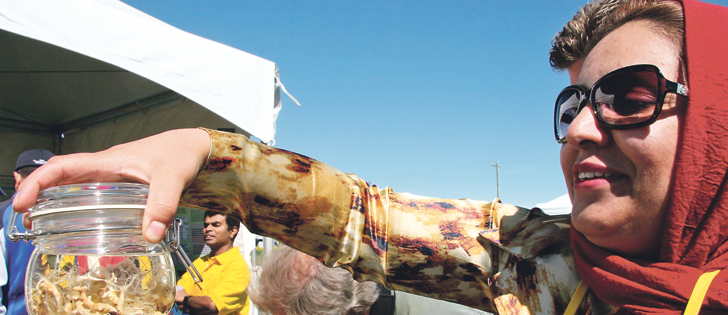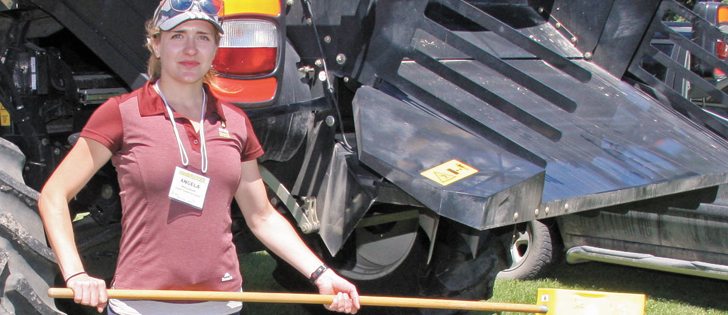Increasingly harmful strains have been identified in Western Canada and so planting canola resistant varieties is advised
OLDS, Alta. — Keeping ahead of clubroot may seem impossible, considering that 200,000 spores can piggyback on a gram of dust.
The disease was first detected in four fields in 2003 and the latest report shows more than 2,440 infected fields in central Alberta.
Rather than planting canola in the same field every year, farmers need to practice longer rotations and use resistant varieties, University of Alberta pathologist Homa Askarian said during Canolapalooza at Lacombe.
“It can live in the soil for 20 years, but the half life is six years,” she said.
Read Also

Farming Smarter receives financial boost from Alberta government for potato research
Farming Smarter near Lethbridge got a boost to its research equipment, thanks to the Alberta government’s increase in funding for research associations.
Soil-applied fungicides are not considered effective in a disease that moves quickly to form foul-smelling galls on the roots.
Most Alberta counties survey for it and are reporting that the disease moves about 20 to 30 kilometres per year.
“The spread is a lot faster than we anticipated based on a soil-borne disease where we would typically think of it being a very patchy distribution and slow moving,” University of Alberta plant pathologist Steve Strelkov said during the Future Farm Expo, which was held in Olds, Alta., July 6-8.
Rotations, sanitation and biological controls may be considered, but resistant varieties, which have been available since 2009, are the best bet, he said.
However, resistance to the disease does not last indefinitely.
“Clubroot is an established problem for canola in Western Canada, and resistance is showing up in an increasing number of fields each year,” he said.
It is not a popular recommendation among growers, but experts suggest lengthening rotations because clubroot can adapt and break the resistance after two exposures to the disease.
“Repeated exposure to a pathogen population to a resistant source will lead to losses in effectiveness of that resistance,” he said.
In 2013, patches of severe clubroot were found in fields planted with resistant varieties of canola.
Last year, 64 fields were detected. The result is increasingly virulent pathogenic strains in these fields mixed in with the better-known types.
“The resistance is still effective, it is just that the pathogen has changed,” Strelkov said.
Scientists are developing a classification system that includes the 19 known strains.
Fourteen new pathogens were identified for Western Canada in 2013-16.
“Since 2014 the most common pathotype we found is a variant of Pathotype 3 called Pathotype 3A,” he said.
Pathotype 3 accounts for 70 to 90 percent of all types found.
One of the newest strains is Pathotype 5 and Pathotype 5X.
Growers with clean fields could still benefit from planting resistant varieties, especially if the farm is close to areas of infection.
“Growing a resistant variety may provide some form of protection,” he said.
“It is not exerting any resistance pressure to the pathogen that is still not present, but for some reason if the pathogen gets introduced, it is very unlikely it could be established because the first host it meets will be a resistant host.”
The most recent clubroot map for Alberta may be found at bit.ly/ 2vd0oza.


















